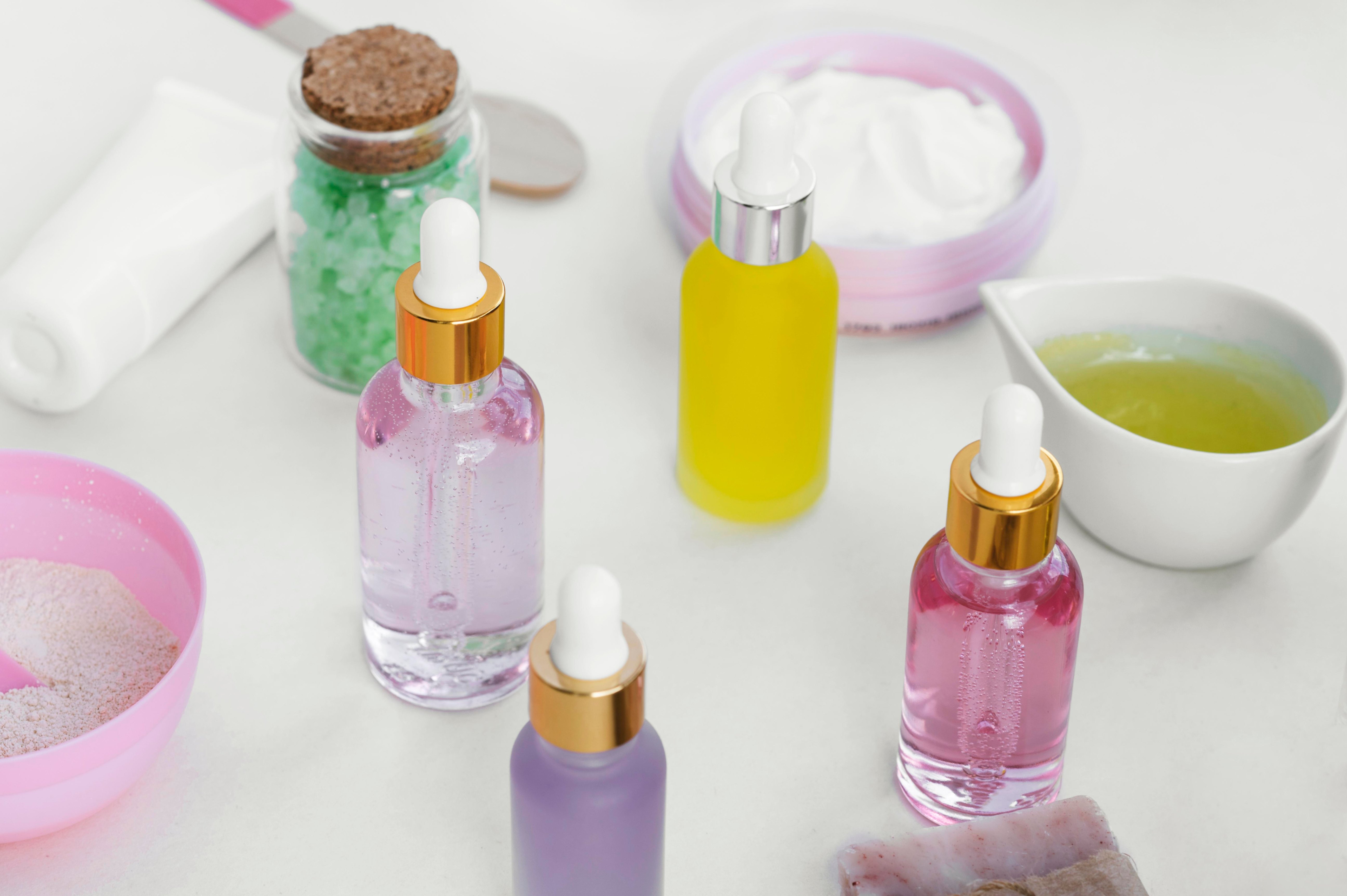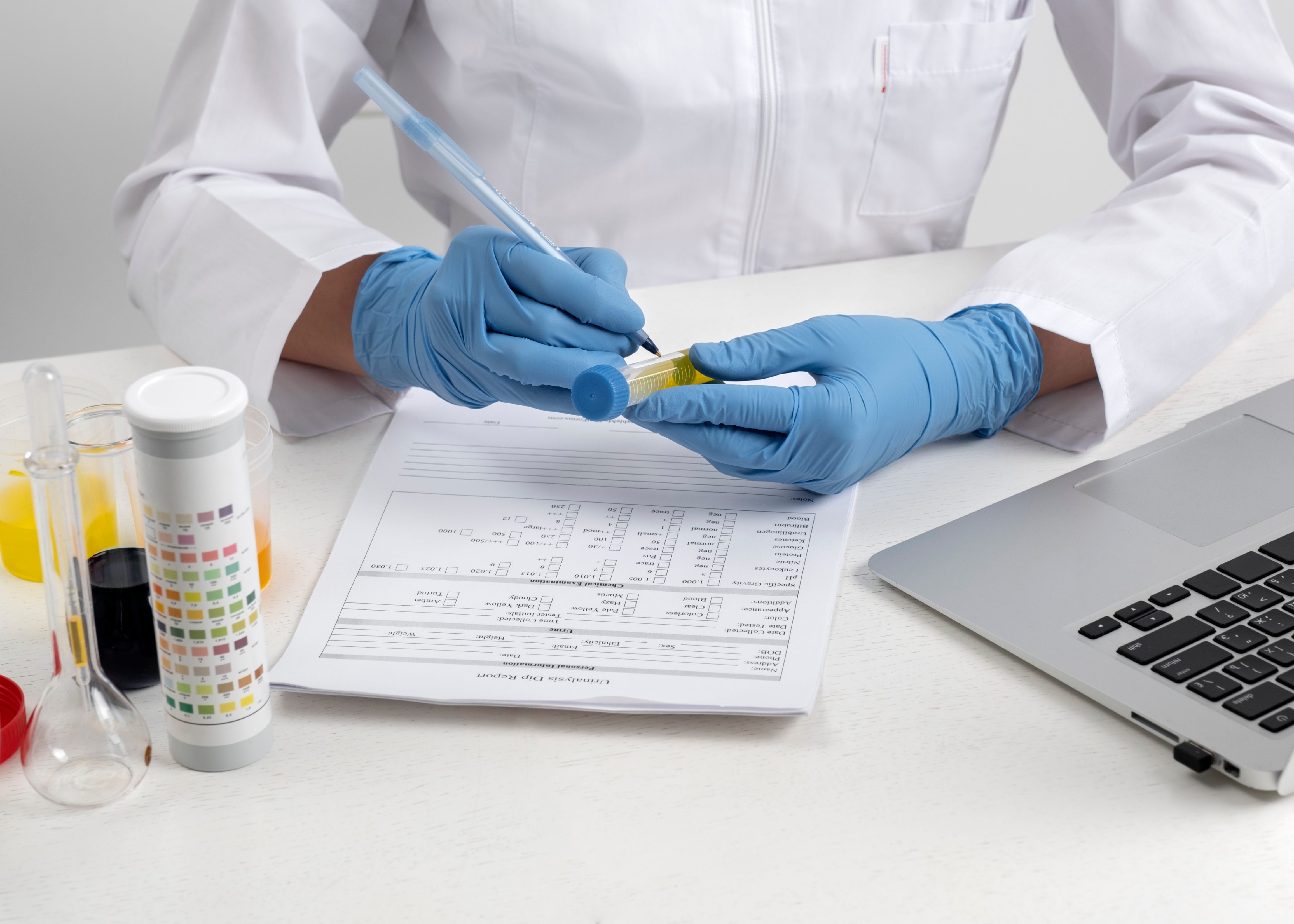
Understanding Cosmetic Actives Efficacy: Fact vs. Fiction
Share

Understanding Cosmetic Actives and Their Importance in Product Development
When formulating a new skincare product, your choice of ingredients determines its success in achieving a radiant complexion. Cosmetic actives are the powerhouse components designed to create a specific, beneficial change in the skin. They are the ingredients that do the actual heavy lifting, targeting everything from fine lines and acne to dehydration.
For product development, selecting the right actives is fundamental. Your choices directly impact how well a product addresses specific skin concerns, supports the skin barrier and moisture barrier, and contributes to long-term skin health. Understanding these ingredients helps you create formulas that are not only marketable but genuinely effective for every skin type. What are the most effective skincare actives for improving skin health? The answer lies in scientific evidence.
Cosmetic Actives: Nature, Purpose, and Benefits
So, what exactly are cosmetic actives? Simply put, an active ingredient is a component that has been scientifically proven to have a beneficial effect on the skin at a cellular level, helping to combat free radical damage. These are not just fillers or texturizers; they are included in skin care products to address a specific concern, whether it's boosting collagen production, fading dark spots, or soothing inflammation.
The primary purpose of an active is to deliver visible results. For example, an ingredient like retinaldehyde (a form of Vitamin A) is included for its proven ability to accelerate cell turnover and regulate oil production while reducing the appearance of wrinkles. Without these targeted ingredients, a product may moisturize or cleanse, but it won't offer specialized benefits.
Ultimately, the benefits of using scientifically validated actives are clear. They are the key to formulating products that promote healthy skin, improve skin texture and tone, and help prevent skin damage while assisting your customers in achieving their skincare goals. How do I identify effective ingredients in my skincare products? Start by learning to read the label.
How Active Ingredients Differ from Regular Cosmetic Additives

It's easy to get confused by a long ingredient list, but it's important to know the difference between active ingredients and cosmetic additives. While actives are there to change the skin, additives are included to support the product itself. They can enhance the feel, preserve the formula, or help deliver the actives more effectively.
Think of it this way: actives are the star players, while additives are the supporting cast. Common additives include emulsifiers that keep oil and water from separating, preservatives that prevent bacterial growth, and thickeners that create a desirable texture. They are essential for a stable and pleasant-to-use product, but they don't target skin concerns like an active does.
Understanding this distinction is critical for product development. A formula might feel luxurious due to its additives, but its true effectiveness comes from the actives inside, particularly in promoting skin firmness. Prioritizing proven active ingredients ensures your skin care products deliver on their promises.
The Science Behind Cosmetic Actives: Efficacy Matters
In the skincare industry, not all ingredients are created equal. The most reliable path to creating an effective product is by focusing on evidence-based actives. This means choosing ingredients that have been rigorously studied and proven to work through scientific research. Relying on science removes the guesswork and ensures your formula is built on a foundation of efficacy.
But what does "evidence-based" truly mean in the context of skin care? It involves looking at clinical data, understanding how an ingredient interacts with skin cells, and validating its function for specific skin concerns. In the sections below, we’ll explore the criteria for scientifically supported actives and highlight some of the most trusted ingredients in modern formulation.
Criteria for Scientifically Supported Cosmetic Actives
For an active ingredient to be considered scientifically supported, it must have a body of research backing its claims. This goes beyond anecdotal evidence or marketing hype. The gold standard is independent, peer-reviewed clinical studies that demonstrate a measurable effect on the skin. Which skincare actives have strong scientific evidence for their benefits? Look for those with published data.
These studies often involve human participants and controlled conditions to evaluate an ingredient's clinical efficacy in addressing the signs of aging. For example, research on hyaluronic acid published in the National Library of Medicine has shown significant improvements in skin hydration and wrinkle reduction, validating it as a top-tier active.
When developing products, prioritizing ingredients that protect against harmful UV rays with this level of scientific validation ensures you are creating formulas that are both safe and effective. It builds trust with your customers and establishes your brand as one that values real results and contributes to overall skin health.
Common Evidence-Based Cosmetics and Their Proven Functions
Many cosmetic actives have risen to prominence due to their extensive and proven tracks in combating oxidative stress. These ingredients are staples in dermatology and high-performance skin care because their functions are well-documented. They offer reliable solutions for some of the most common skin concerns.
From Vitamin C’s brightening power to salicylic acid’s ability to clear pores, these actives form the backbone of effective product lines. Their mechanisms are understood at a cellular level, whether it's stimulating collagen synthesis, combating uneven skin tone, or inhibiting melanin production.
|
Active Ingredient |
Proven Function |
|---|---|
|
Vitamin C |
Potent antioxidant, brightens skin, boosts collagen production and amino acids. |
|
Hyaluronic Acid |
Deeply hydrates and plumps the skin, reducing fine lines. |
|
Glycolic Acid (AHA) |
Exfoliates the skin's surface, improving texture and radiance. |
|
Salicylic Acid (BHA) |
Penetrates pores to exfoliate, reducing acne and blackheads. |
|
Azelaic Acid |
Reduces hyperpigmentation, calms inflammation, and fights acne. |
Marketing Claims vs. Clinical Efficacy in Skincare Products
Decoding Skincare Marketing Terminology and Buzzwords
The skincare market is saturated with buzzwords that can be misleading. Terms promoted on social media and packaging are often vague and not regulated, making it difficult to gauge a product's true value in preventing skin aging. How can I check if my skincare products are truly evidence-based? Learning to see past the hype is the first step.
Words like "natural," "pure," and "revolutionary" sound appealing but offer no real information about a product's effectiveness. Even the term "dermatologist-tested" doesn't necessarily mean "dermatologist-endorsed." As a product developer, it's your job to look deeper than the surface-level claims, especially if it’s your first time navigating through these marketing tactics.
Here are a few common marketing terms and what they might actually mean:
"Chemical-free": A scientifically impossible claim, as everything, including water, is a chemical. It usually means free of certain controversial synthetic ingredients.
Instantly erases wrinkles: Often refers to ingredients that temporarily plump or fill the appearance of fine lines with hydration, not a long-term structural change.
"Powerhouse ingredient": A non-specific term used to make an ingredient sound more potent than it may be.
"Clean": This term is unregulated and can mean anything from non-toxic to sustainably sourced. Always check the brand's specific definition.
Distinguishing Marketing-Driven Ingredients from Clinically Validated Actives
So, how do you spot the difference between a trendy, marketing-driven ingredient and a clinically validated active that is appropriate for those with oily skin? The key is to look for specifics. A product featuring evidence-based actives will often highlight the ingredient itself, such as "10% Niacinamide Serum" or "2% Salicylic Acid Cleanser."
Vague claims like "contains a botanical blend for radiance" should be a red flag. While botanical ingredients can be effective, the claim is meaningless without specifying which botanicals and what evidence supports their function. Look at the full ingredient list (INCI) to identify the active ingredients and see where they fall. If they are listed near the end, their concentration is likely too low to be effective.
Empowering yourself with knowledge allows you to bypass the noise. Use resources like published scientific journals to research ingredients before including them in your formulations. This commitment to clinical efficacy will set your products apart and build a foundation of trust with your audience.
Ingredient Transparency and Why It Matters
Ingredient transparency is no longer a niche demand; it's a cornerstone of the modern beauty industry. It refers to the practice of openly and clearly disclosing every ingredient in a product's formula. This honesty builds immediate trust and empowers consumers to make informed choices about their skin health.
For brand developers, transparency is a powerful tool. It demonstrates confidence in your formulation and respect for your customer. By moving away from proprietary blends and secret formulas, you align your brand with the values of the modern, educated consumer, fostering loyalty and setting a high standard for clean beauty. Why is ingredient transparency important when choosing skincare actives? It's the only way to know what you're really getting.
The Role of Transparent Ingredient Disclosure in Clean Beauty Formulation
What does 'clean beauty' mean in relation to active cosmetic ingredients? While the term is broad, a core tenet is transparency. True clean beauty isn't just about avoiding certain beauty products; it's about being upfront about what is included in the skin care products and why. Transparent ingredient disclosure is fundamental to this philosophy.
When you formulate with transparency in mind, especially for consumers with sensitive skin, you commit to using ingredients that are not only safe but also beneficial. This means clearly listing all components, from the powerful actives to the supporting additives, so consumers know exactly what they are applying to their skin. It moves the focus from fear-based marketing ('free-from' lists) to fact-based education.
This approach allows customers to avoid potential allergens and choose products that align with their ethical standards, such as vegan or sustainably sourced ingredients. It also protects them from harmful components and environmental stressors by providing complete formulation clarity, including options for hair care.
How Disclosure Influences Consumer Trust and Product Effectiveness
Full ingredient disclosure has a direct and profound impact on consumer trust. When a brand is open about its formulas, it signals that it has nothing to hide. This honesty fosters a strong relationship with customers, who are more likely to remain loyal to a brand they believe is trustworthy and has their best interests at heart.
Furthermore, ingredient transparency is linked to product effectiveness. When consumers can see which active ingredients are in a product and, ideally, at what concentration, they can better assess if it will work for their specific skin concerns. Does ingredient disclosure affect the effectiveness of skincare products? Directly, no—the formula is what it is. Indirectly, yes, because it allows users to choose the right product in the first place.
For example, a knowledgeable consumer looking for help with hyperpigmentation can look for ingredients like kojic acid, tranexamic acid, or azelaic acid on the label. This level of transparency helps manage expectations and ensures customers can build a skincare routine that truly supports their skin health goals.
Harrods Global’s Approach to Clean Beauty Formulation
Rigorous Ingredient Sourcing for Evidence-Based Cosmetics
Creating an evidence-based cosmetic product in the United States starts long before formulation—it begins at the source. A rigorous ingredient sourcing protocol is essential for ensuring the quality, purity, and efficacy of every active ingredient. This involves partnering with reputable suppliers who can provide documentation and data to back their materials.
This process goes beyond simply ordering a raw material. It includes verifying the concentration and stability of the active, ensuring it is free from contaminants, and considering its environmental impact and potential environmental damage through sustainable practices. For example, when sourcing Vitamin C, a brand must ensure it's a stable form that won't degrade before it reaches the consumer.
This meticulous attention to detail during the sourcing phase is what separates high-quality skin care from the rest. It guarantees that the active ingredients in the final formula are potent and capable of delivering the promised benefits, ensuring consumer safety and product performance.
Testing Protocols and Clinical Validation at Harrods Global

How do cosmetic product developers evaluate the efficacy of active ingredients? Once high-quality ingredients are sourced, they must be formulated into a final product that undergoes its own set of rigorous tests. At a company like Harrods Global, testing protocols are a non-negotiable step to confirm both safety and clinical validation. This ensures the product is effective and lives up to its claims.
These protocols often include stability testing to ensure the formula remains potent and safe over its shelf life, patch testing to check for potential irritation, and consumer use studies. Most importantly, clinical validation involves testing the final product on human subjects to measure its effects on specific skin concerns, such as wrinkle depth or skin hydration.
This commitment to evidence-based testing demonstrates a brand's dedication to providing real results. By investing in clinical studies, a company proves that its products work as advertised, giving both developers and consumers confidence in the final formulation.
Spotlight on Six Science-Approved Cosmetic Actives
While countless ingredients are available, a select few have consistently proven their worth through extensive scientific research. These science-approved active ingredients are trusted by dermatologists and expert formulators to address a wide range of skin concerns, including the risk of skin cancer, for nearly every skin type.
In the following sections, we will shine a spotlight on some of the most effective and well-regarded actives in the skincare world that enhance skin elasticity. Understanding their functions and benefits will empower you to make strategic choices in your product development process and create formulas that deliver exceptional results. What are six science-approved skincare actives I should consider adding to my routine? Let's find out.
Cheat Sheet: Popular Actives and Their Primary Skin Benefits
Here are some popular actives and what they do best:
Vitamin C: A powerful antioxidant that brightens skin, reduces dark spots, and supports collagen.
Hyaluronic Acid: A moisture magnet that holds up to 1000 times its weight in water for intense skin hydration.
Glycolic Acid: An AHA that exfoliates dead skin cells to smooth texture and diminish fine lines.
Salicylic Acid: A BHA that penetrates oily pores to clear acne and prevent future breakouts.
Azelaic Acid: Gently exfoliates, calms redness, and targets hyperpigmentation and mild acne.
Tranexamic Acid: A rising star for fighting discoloration, especially stubborn dark spots and melasma.
Zinc Oxide: Provides broad-spectrum UV protection and soothes irritated skin.
Incorporating These Actives into Your Product Development Strategy
Once you've selected your active ingredients, the next step is incorporating them effectively into your product development strategy. It's not just about adding them to a base; formulation requires careful consideration of concentration, pH, and ingredient compatibility to achieve the best results.
For instance, some actives, like retinol and benzoyl peroxide, should not be used in the same formula as they can deactivate each other or cause significant irritation, potentially leading to premature ageing. Conversely, pairing ingredients like Vitamin C and Vitamin E can boost their antioxidant properties. Always start with lower concentrations of potent actives to minimize potential sensitivity.
Finally, every new formula should undergo rigorous testing for stability and safety. Pay close attention to how the actives perform within your chosen base and ensure the final product is suitable for the intended skin type and concern. This thoughtful approach ensures your skin care products are both safe and highly effective.
Frequently Asked Questions
How can I tell if a skincare product is truly evidence-based?
Look past the marketing hype on the front and analyze the ingredient list on the back. A truly evidence-based product will feature active ingredients with proven clinical efficacy, such as retinoids, green tea extract, or Vitamin C, high up on the list. Vague claims without specific ingredient callouts are often a red flag.
Which ingredients should cosmetic brand entrepreneurs prioritize?
Entrepreneurs should prioritize foundational actives that address common skin concerns, including the effects of sun exposure, and support overall skin health. Ingredients like hyaluronic acid for hydration, niacinamide for skin barrier support, and Vitamin C for antioxidant protection offer broad benefits and are backed by extensive research, making them excellent cornerstones for any product line.
Does full ingredient disclosure guarantee product efficacy?
Full ingredient disclosure does not guarantee product effectiveness on its own, but it is a crucial element of transparency. Efficacy depends on the correct concentration and formulation of actives. However, disclosure allows educated consumers to assess if a product contains the right ingredients for their skin health goals, making it a key indicator of a trustworthy brand.
